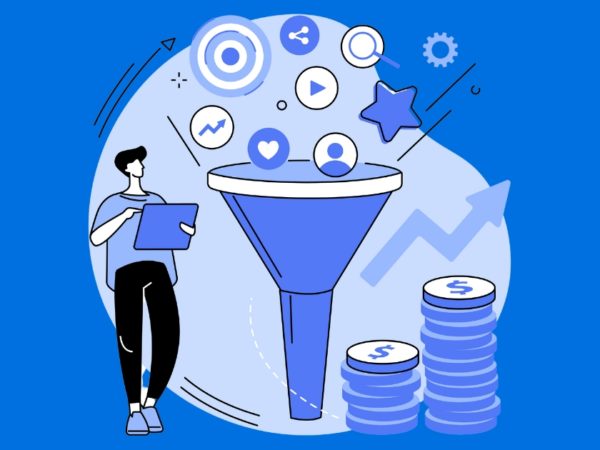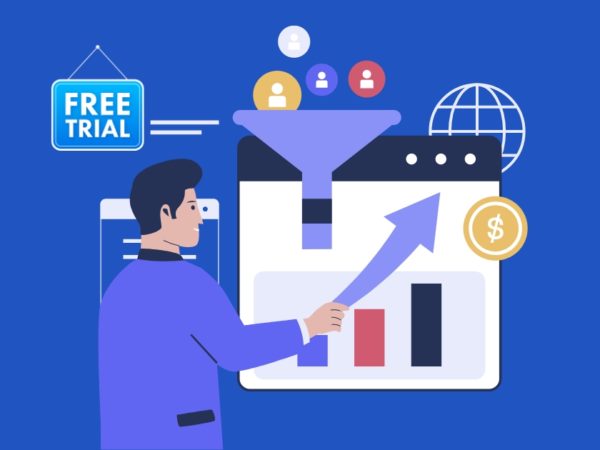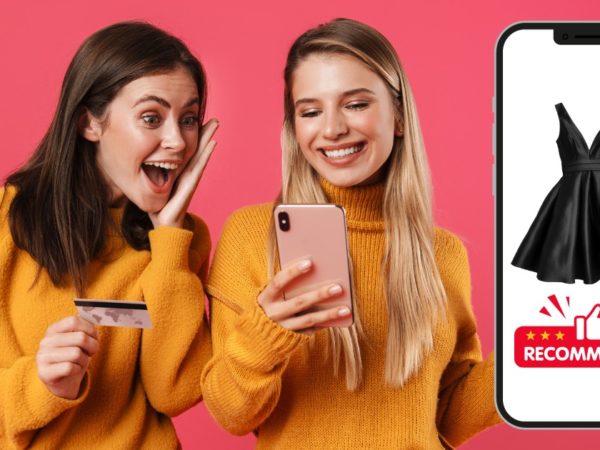Experiential marketing is a truly effective and fast marketing tactic to build brand awareness via face-to-face connections with the public or business clients.
The traditional advertising model of TV and radio is weaker than ever. Internet users use adblockers to stop ads from online ad platforms.
On top of that, the availability of add-free entertainment and informative content on OTT platforms has truly shrunk the space for advertising-based business marketing.
Being a smart business owner or marketing manager, you must explore unique and sustainable marketing tactics. Also, you must move faster than your competitor to grab as many prospects, leads, and customers as possible.
Experiential marketing is a fast-growing marketing strategy you can utilize in the dwindling online and offline advertising market. Read on to become an expert on it!
Introduction
<img alt="YouTube video" data-pin-nopin="true" data-src="https://kirelos.com/wp-content/uploads/2022/11/echo/hqdefault.jpg637345315ca16.jpg" height="360" loading="lazy" src="data:image/svg xml,” width=”480″>
Experiential marketing, as the name suggests, is a business marketing strategy where you offer your customers to experience products and services.
Such experiences could be in-person or virtual. But the primary target is to build an impact on the event participants so that you get the following without paying for more marketing campaigns:
- Inactive customers buy or subscribe again
- Existing customers spread your brand name and features within their social networks
- Direct conversion of leads and casual participants to customers during the events
Additionally, it is everything about creating an immersive, engaging, and fun experience that helps the brand attract more attention and overcome the popularity of rival brands.
You may hear the following marketing terms about experiential marketing, and you are right; they are all similar:
- Engagement marketing
- On-ground marketing
- Live marketing
- Participation marketing
- Loyalty marketing
The ultimate goal of this marketing tactic is to show the consumers that you are not in the market to sell products or services.
You are there with your consumers, listen to their pain points, improvise your product, make it cost-effective, and incorporate the customer’s voice.
Objectives
#1. Create a Buzz About Your Product
The prime objective of this marketing approach is to create a buzz around your product, service, or brand and keep the buzz going for quite some time. Even when it does not involve any celebrities or influencers, experiential campaigns can have a long-lasting impression on customers.
As the experience gets shared by word-of-mouth or social media shares, the buzz continues and does the marketing on your behalf.
#2. Increase Brand Awareness
Businesses also use this marketing technique to make people aware of their brand. Its strategy involves putting your brand into the spotlight, so everyone has to notice it, no matter what. As people can relate to these campaigns, they are more likely to talk about your company to others.
#3. Get Media Attention
Rightly-done experiential marketing can offer you media coverage without spending a dime. Also, you do not have to invest in PR as this campaign can put you on media and allows you to spend the media/PR budget on something else.
#4. Positive Customer Association
Another objective of this campaign is to establish your business as a strong one. Such associations make building and fostering a meaningful relationship with your consumers easier.
As it gives rise to conversations around your company, the marketing process becomes seamless with two-way communication.
#5. Improve Business Profile
Experiential marketing helps brands build a strong affinity. Since it makes the conversation easier for the customers, companies get benefitted from higher brand recall, loyalty, and better sales.
With this marketing, you can offer customers a hands-on experience to improve your credibility. This elevates your brand’s profile and builds goodwill in the industry.
#6. Make an Emotional Connection
Emotion is the best way to help someone recall your brand amidst thousands of companies. With this type of marketing, businesses find it easier to build close connections with customers. It increases brand loyalty and ensures that customers return to your company for future requirements.
#7. Launch a New Product
When you are about to launch a new product, traditional marketing techniques might fail to get the required public attention. You need to do something new, so they notice your product among the clutter of existing advertisements.
Here, experiential marketing can play a big role by integrating the products with the event. It can personally connect to the target consumers, so they notice your new products.
Does Experiential Marketing Work?
This marketing tactic works because of the following reasons:
- It makes a one-to-one connection between the business and its clients/consumers.
- In-person or virtual events that are fun and engaging strengthen the connection through emotional elements.
- The level of loyalty and trust grows, which drives direct and word-of-mouth sales.
- Consumers and clients sought-after actionable experiences or demonstrations of the product they want to buy, and experiential marketing fulfills this requirement.
- Participating customers, prospects, leads, and casual visitors supply the current market trend and data you would otherwise have to buy.
- Such marketing events work like a chain reaction. When customers feel happy at your event, they will share it on social media or in a conversation with a friend. Then, on your next customer-facing event, you might see an increase in participants.
- Your brand merchandise or marketing collateral teams can distribute more paid or free merch among the attendees.
Let us explore some factual figures on experiential marketing:
Success Rate
- According to Agency AE, 75% of business-to-customer (B2C) marketers expressed that in-person events are crucial for their business’s promotion and success.
- This marketing tactic is bringing in so much success that 81% of companies said their participation marketing spending would exceed or match the pre-COVID-19 budget, as reported on EventTrack 2021.
- According to HubSpot, experiential marketing is one of the top five marketing tactics companies presently rely on.
- The same EventTrack 2021 report says that 91% of consumers intend to buy a specific brand’s products after attending brand experiences or activation events.
Return On Investments (ROI)
- According to the Drum, effective brand-in-hand experiences usually lead to an 85% buying intention and a 4:1 ROI.
- Another similar report from Marketing Charts says that the ROI from customer events-based marketing is usually between 25% to 34%.
- Businesses with a marketing event budget between $50 to $100 million anticipate an ROI of 5:1, as mentioned by Prelude Events.
Steps to Set Up and Run
#1. Learn More About the Customer Base
Before you plan on this campaign, look at your current customer data to know the kind of experiential marketing suitable for them. It will also give you insights into unexplored markets.
#2. Set Up the Goals
Like every other marketing campaign, you need to know what you want to achieve out of this campaign. Is it about promoting a new product or finding new customers for the old products? Whatever it is, start preparing for the campaign once you solidify the goals.
#3. Identify KPIs
Experiential campaigns help gather nuanced customer data and in-person feedback. However, companies should be aware of the ways to measure the KPIs and the data that should be collected from the participants. Brands can make better decisions when they consider such objectives and KPIs.
#4. Confirm Campaign Budget
As you design any new campaign, there has to be a budget to ensure company ROI. To run an experiential marketing campaign, a solid budget is essential. It should cover the campaign setup, safety testing, consumer gathering, and event and be sufficient to deliver a memorable experience.
#5. Choose a Cross-Channel Plan
Though most experiential marketing events are done at a physical location, it does not always have to be like that. You can also live stream the event on social media. Also, there should be scope for customers unable to attend the event physically to participate via text, email, and social media.
#6. Stay on Top of the Execution
You do not want to look unprepared in front of an audience on the event day. Therefore, ensuring logistics and performers are all prepared and in place should be your top priority.
The team management should keep a sharp eye on the campaign to keep things running smoothly.
#7. Train Your Team
Every team member who will participate in the campaign should have proper training. They should be nicely briefed to put on a cheerful show. Moreover, everyone should know their duties and have sufficient authority for task completion.
#8. Prioritize Customer Safety and Experience
For this marketing technique, you must offer your customers a positive and share-worthy experience. While keeping messaging and execution aligned with your business operations, you must also assure the participants’ safety.
#9. Going Live With the Campaign
The biggest stage of this campaign is to make the event take place. Get done with all the last-minute checks to avoid any glitches during the event. Also, stay prepared to deal with any unforeseen issues effectively.
#10. Result Assessment
During the campaign, check if you can correctly gather the data you need. After it is complete, you need to assess the success of your campaign and implement them into your next marketing strategy.
Real-Life Examples
#1. Google.org Impact Challenge Bay Area
Google helped local non-profits in the San Francisco Bay Area to resolve some challenging community issues. To help the non-profits, Google also released $1 million in funding.
Google placed many interactive screens throughout the Bay Area for voting of top non-profits in the locality. Such campaigns have a deep impact on brand-building among the residents.
#2. M&M’s Flavor Rooms
<img alt="YouTube video" data-pin-nopin="true" data-src="https://kirelos.com/wp-content/uploads/2022/11/echo/hqdefault.jpg6373453282c21.jpg" height="360" loading="lazy" src="data:image/svg xml,” width=”480″>
M&M set up many pop-up stores in New York to hunt for its next popular flavor. These stores consisted of internal decorations and props specific to certain flavors. The pop-ups would also contain drink and snack bars with M&M-themed cocktails.
This campaign allowed the customers of M&M to participate in producing chocolate flavors. Soon, these outlets appeared in social media posts and increased M&M’s brand popularity.
#3. Lipton Ice Tea Misting Zones
<img alt="YouTube video" data-pin-nopin="true" data-src="https://kirelos.com/wp-content/uploads/2022/11/echo/hqdefault.jpg637345328a7b1.jpg" height="360" loading="lazy" src="data:image/svg xml,” width=”480″>
To market Lipton Ice Tea, Lipton set up interactive billboards in subway stations and high-traffic zones. These billboards would create a mist for a few seconds so that the passengers waiting for buses or subway cars can refresh themselves on hot summer days.
The Share a Coke campaign by the Coca-Cola Company in Australia and the US has received phenomenal appreciation from its customer base. Coke started printing the phrase “Share a Coke with..” followed by 150 popular names in Australia and 250 in the US.
Later, the campaign started printing popular song lyrics in the USA market for its Share a Coke and a Song campaign.
#5. Facebook: Facebook IQ Live
<img alt="YouTube video" data-pin-nopin="true" data-src="https://kirelos.com/wp-content/uploads/2022/11/echo/hqdefault.jpg6373453389920.jpg" height="360" loading="lazy" src="data:image/svg xml,” width=”480″>
This experiential marketing campaign from Facebook helped the business to understand the buying flow of products/services when customers use social media for shopping.
Facebook did all these in physical retail shops, which business people can access. There was also an Instagram cafe full of selfie zones and other photo opportunities.
#6. Pay With a Photo Campaign by Google
In a bid to market its photo app, Google chose the streets of Austin, Texas. There the tech giant rolled out many Google Photos app-branded cupcake vending trucks. The people on the street could get a cupcake and pay for it by clicking a photo using the Google Photos app.
Final Words
Marketing your brand, product, service, or idea is always necessary, whether the market is going up or down. You must put the marketing budget into the right campaigns to extract maximum benefits.
Experiential marketing is about getting maximum eyeballs on your products. Especially as many countries lifted the COVID-19 restrictions, event management companies are getting many work orders to set up in-person marketing events where businesses can directly engage with their customers.
You can leverage the elaborate knowledge on experiential marketing mentioned in this article to become more confident the next time you strategize a new marketing campaign.
You may also be interested in the video marketing campaign.



